The exhibition event SEEN Nucleu 0008, which took place this fall at Galeria Leilei in Bucharest, was organized by the interdisciplinary group of artists – comprising Gabriela Mateescu, Andrei Mateescu, Diana Miron, and Marina Oprea – associated with spam-index.com, a platform promoting digital art, and, more recently, with a series of performances and installations that culturally revitalized the protected area of the Văcărești Nature Park (Nucleu 0009. Peisaj în deteriorare etc.). Dedicated to the recent meanings of the (natural, technological, fallible, empirical) gaze, Nucleu 0008, tellingly titled SEEN, brought together digital artworks, performance actions, and sound experiments, illustrating again the group’s interdisciplinary, intermedia working process and, at the same time, their adherence to the posthumanist paradigm that hybridizes visual art with the performing arts, advocating for a repositioning of the human in relation to nature and technology.
The first relevant fact revealed by the project’s title is that, nowadays more than ever, seeing and being seen demand technological mediation. Few are those who have not yet understood that even the metaphysical to be increasingly requires a presence on social media platforms. And, while our existential value is quantified through our likes, followers, and hearts on our profile pictures, our memory, our remembering, increasingly depends on snapshots taken with a camera, on videos recorded with our cameras or mobile phones.
The idea that even the individual’s relationship with themselves passes through the world, originating in phenomenology, gains substance on the level of the electronic network, where we all recompose our lives and identities through comments and message sent out on Facebook and Instagram feeds. In this context, artist Hortensia Mi Kafchin (originally from Cluj and working in Berlin since 2015) proposes the unusual juxtaposition between her painting I’m waiting for you like aliens, a relaxed contemplation of God’s spherical representation closing in on the horizon, and a tablet that reveals the daily sight of the e-lost and e-regained self, the daily internet of infinite scrolling through meaningless images, an action that actualizes a new kind of e-contemplation. The twofold relation to Time is suggested by the opposition between the artist’s posture – in her pajamas she calmly smokes a cigarette holding a watch (a physical one, or, at least, represented through painting) – and the e-seconds wasted online.
On this same thread we find George Crîngașu’s projects. Crîngașu is a young artist who, together with Hortensia Mi Kafchin and Maria Balea, at the Paintbrush Factory in Cluj, founded the artist-run space Superliquidato, a space that has promoted digital art since 2014. Crîngașu’s contribution to SEEN consists in a series of animated paintings, among which Michelangelo’s portraited, attributed to Daniele da Volterra, and digital collages with a mix of vaporwave aesthetics (where fragments of classical statues are juxtaposed with digital still lifes) and the Nietzschean philosophy of the pleasure of cruelty, visually interpreted in a way reminiscent of A Clockwork Orange (Kubrick, 1971). We notice here that online applications like Deep Nostalgia have made the concept of animated painting, which, in 2019, added life to the Russian Pavilion at the Venice Biennale, available to everyone, following the same mechanism of democratization and overcoming of the original-copy binary that we have seen with the technical image from the age of photography and film to the present. The discourse around the death of the aura, contemplation, and the original launched by Walter Benjamin at the end of the thirties is complemented by George Crîngașu with a discourse around creativity by means of manipulating stock bodies, objects retrieved from online repositories. The idea is continued by Anastasia Manole in her project Recycle Bin. In turn, we ask ourselves how to meet the army of renaissance characters that have become animated overnight, their inhuman gaze, the strange zombie-like gestures of beings who were once human. Should we have fun or freak out at the sight of things that fall into that recent category called the Uncanny Valley?
The shy plants that grow in the shadows of fragmented statues in George Crângașu’s work become the protagonists and subjects of postumanist critique in the 3D animations exhibited by Adrian Ganea and Thea Lazăr, the first following the condition of trees and the second the disappearance of two endemic plants, Saussurea Porcii and Nymphaea Lotus var. thermalis. The situation of the thermal waterlily, doomed to be NOT-SEEN because the lake at Băile 1 Mai dried up (following an invasion of hotels and resorts in the area), seems to have been improved by the pandemic. However, the status of the plants and the environment in Romania still demands a lot of attention and determination from local artists and activists.
The critique of anthropocentrism, the advocating for integrating the human within the world of living things, is an important goal of the SEEN project, which experiments both with the becoming-animal and with the becoming-machine, following Nam June Paik’s work which humanizes technology – his installations combining television sets with plants or fish – or following the tactical media model, promoted by net activists like Geert Lovink. In this context, the 3D animations mentioned above showcase a paradoxical fact, namely that technology, when wielded by artists, can bring us closer to nature. The animations exhibited by Thea Lazăr and Adrian Ganea, which are deeply anchored in the technological, operating with 3D objects, with virtual trees and flowers, put forth a manifesto for the natural, the entire spectrum of life. The activist nature of Thea Lazăr’s work is supported both by the dimension of flower-agents, which cover the entire screen, as well as the choice of a ground-level, grassroots point of view, opposed to the anthropocentric perspective mentioned earlier. Adrian Ganea’s work, inspired by the old machines of Athanasius Kircher, which demonstrated hydraulic principles using crabs and eagles that “vomited liquids,” reinterprets, in digital fashion, the relation between nature and machine, between born and constructed. Appropriately displayed as a projection bordered by a black frame painted on the wall, the animation shows a young tree playing the aria Lasciatemi Qui Solo by Francesca Caccini one of the first female opera composers, on the cello. The oppressive mix of the nostalgic piece, the frame, and the dark picture invokes a register of affect, of the chiaroscuro that links the Gothic to the Baroque and, later, to all the waves of Romanticism and Expressionism, foreshadowing the emergence of a possible electronic Baroque preoccupied with e-death.
The Romantic theme of death is taken up by Anastasia Manole in her project Recycle Bin, a mix of older works (fragments, works-in-progress, digital art prints hiding in her own closet or a gallery storage room) engaging with the question of the duration of physical and virtual artworks and the art market’s obsession with the UN-SEEN: How many times can you exhibit a work before boring your audience? What happens to artworks when they are no longer SEEN? Does their return to the studio redefine the studio as a graveyard, a heterotopia, or a trash can? Are the digital works stored on hard drives and often classified as “indestructible” and “infinitely reproducible” truly immortal? Or does the tech world’s appetite for the UN-SEEN, surpassing that of the artworld, determine, rather, a radical shortening of their lives? Could we use the term electronic death to refer to the fate of applications that can no longer be read by new software of that disappear together with the platforms they were developed for (see the closing down of the New Hive digital art platform, which led to the permanent loss of the works created there)? Artist Gabriela Mateescu, creating digital art under the pseudonym Anastasia Manole, has experienced loss both in the world of real objects and installations as well as in the digital one. Like many young artists, she was forced to destroy her physical works after being exhibited because of a lack of storage space and has lost digital works when her storage device broke and when the New Hive platform closed down.
In the case of other projects, seeing is associated with foreseeing, after the model of ancient divination mania, favored by the gods Apollo and Dionysus. SEEN introduces this new kind of prediction into the Tarot (in 3D) and weather forecasts during this period of complete natural unpredictability due to the excesses of the Anthropocene. The works brought together are the infallible tarot kit made by taietzel ticalos (which I got to experience for myself) with the tender video-poem Weather Report from the Immediate Unreality by Jasmina Al-Qaisi and Anastasia Manole, successfully illustrated by Roberta Curcă in the accompanying zine.
In terms of the connotations of the verb to see, we note an extension of sight’s meaning towards the spheres of the other, “less aesthetic” senses, an extension influenced both by the migration of life (e-life) and culture towards the virtual and the post-internet tendency whereby specific categories of the digital (the fragmentation and pixelization of representations, digital immortality, and the pausing and fast-forwarding that we are often tempted to apply in our daily lives) enter the physical world. In this sense, hypermedia structures and tele-action, the intricate mix of real and virtual, facilitate new synesthetic proximities, an unusual synonymy between to see, to touch, to hear, etc.
The intimate link between sight and sound stands out in the sound project Dream. Or two meditations, part of the sci-fi novella SKIN45^, in which fashion theorist, writer, and co-founder of the Aici Acolo collective Edith Lazăr presents “a strange world where the potential of biomatter and algorithms has managed to create thriving lands after (and above) a Great Devastation of Waste.” The narrative, with relevant posthumanist implications, discusses the concepts of skin, clothing, camouflage, ornament, and iridescence, engaging with the perspectives of sentient objects and encouraging Zen journeys in the lands of beatitude.
In a similar register, the sound performance WAVE-UNSEEN, a concept developed by Diana Miron in collaboration with Laurențiu Coțac and Outis Quartet (Francisco Ramonda and David Ursei – violins; Mihai Todoran – viola; Victor Sandu – cello), proved to be a complex inter/trans-media experiment. For two hours, the six musicians interacted through sound, overlapping layers of pre-recorded sound collages with live acoustic resonances. The project included a set of visuals created for the event by the AURAL EYE group and the video works of a group of young artists that Diana Miron and Laurențiu Coțac trained as part of an experimental workshop where they listened and attempted to vocally replicate the acoustic signature of a public or private space. The intermedia experiment, which promoted active listening and an understanding of sounds in acoustic environments, also had an interactive visual component, through a series of streaming cameras that took close-ups of the performers’ body and facial movements, immersing the audience in an intimate process of micro-expressive acoustic understanding.
SEEN’s performative component brought together four artists with different experiences and approaches, with intermedia and participatory projects that marked important directions that have been outlined in the last few years on the local contemporary dance and action scene. Marina Oprea’s selection debuted with Alexandra Sand, a performance and video art practitioner that initiated a synesthetic game with lilies, oranges, and apples, which were offered to the spectators, revisiting a performance shown at Nucleu 0001 (2014, Tipografia Gallery, the current UNARTE gallery at Combinatul Fondului Plastic). The smell of lilies filled the gallery for weeks on end. The peeled oranges and apples decayed slowly, reminding one of past performances and recontextualizing Anastasia Manole’s questions raised in Recycle Bin concerning body and performance art. How do actions, bodies, and movements become unseen? Does a trace of them remain outside the spectators’ and artists’ memory? What happens to the galleries and spaces in which they take place? Another recontextualized memory was the PFA Orchestra’s concert, organized as part of Nucleu 0005 at Combinatul Fondului Plastic, in the abandoned hall where the rain trickled down through the roof among the artworks and technical equipment, which would in a few months become the white-cube Nicodim Gallery.
By corporeally interacting with the audience in the gallery space (but also with the cars on the street), Florin Flueraș and Eliza Trefaș staged, under the title of Unimages, a series of deviations from plausible bodily states and self-presentations, performative anomalies with the goal of revealing and counteracting perception habits, superficial judgments, and imposed perspectives, as well as refreshing our ability to see and understand. The two would become unseen, almost blending in with the audience. Their unperceivable gestures, their slow movements within the crowd, made their bodies almost unnoticeable, and the visitors often asked themselves where the performance was taking place, without realizing that it was already happening, that the artists were among them, lost among artworks and people. Expecting a show, announced on Facebook, was discouraged through the two artists’ camouflage into the everyday.
In the final performance, Raluca Croitoru invited the audience to take part in Art History Aerobics, a sample session to activate your body and imagination that illustrated the defining moments in European art history. Reminiscent of Lia Perjovschi’s initiative, during the communist period, when artists were disconnected from international cultural resources, of constructing her own version of art history (Subjective Art History), Raluca Croitoru exercised a vocal and corporeal language illustrating and critiquing the various ways of understanding and representing the body in art.
In the end, the impression we are left with after seeing this mix of artists from the sphere of digital art, of electronically edited music, and of performance art proposed as part of this visual research projects situated at the intersection of the human eye with the famous kino-eye, the ubiquitous eye of the camera, is that everything was possible due to a new model of the gaze: the haptic gaze that can no longer be reduced to contemplation detached from the social and political sphere.
The art event SEEN – Nucleu 0008, curated by Gabriela Mateescu, Marina Oprea and Diana Miron took place at Leilei Gallery in Bucharest during 15.09.2021 – 23.10.2021.
Artists: George Crîngașu, Adrian Ganea, Edith Lázár, Thea Lazăr, Anastasia Manole and Jasmina Al-Qaisi, taietzel ticalos, Hortensia Mi Kafchin, Florin Flueraș, Eliza Trefaș, Raluca Croitoru, Laurențiu Coțac, Outis Quartet, Aural Eye.
Translated by Rareș Grozea
POSTED BY
Raluca Oancea
Raluca Oancea (Nestor), member of International Association of Art Critics (AICA) and European Network for Cinema and Media Studies (NECS), is a lecturer at The National University of Arts in Buchares...
www.Dplatform.ro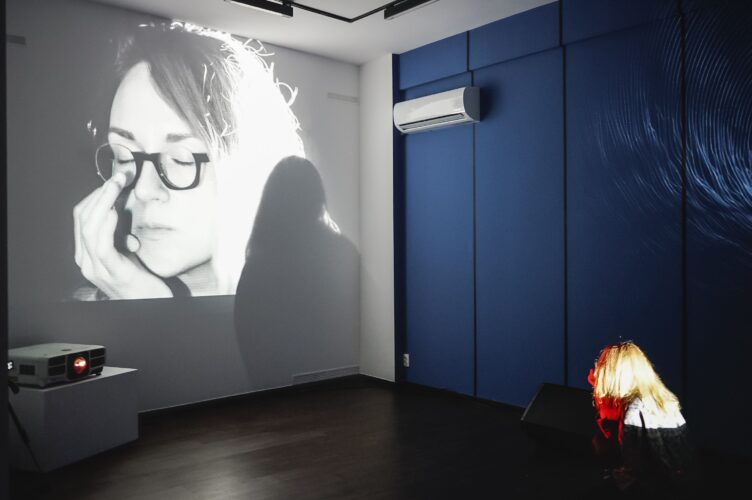
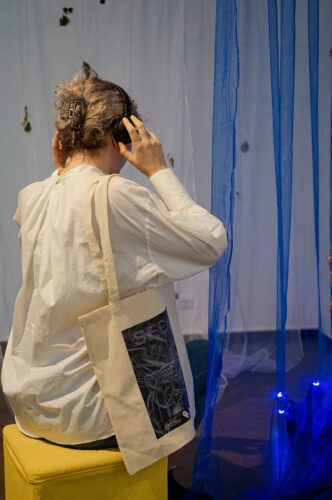

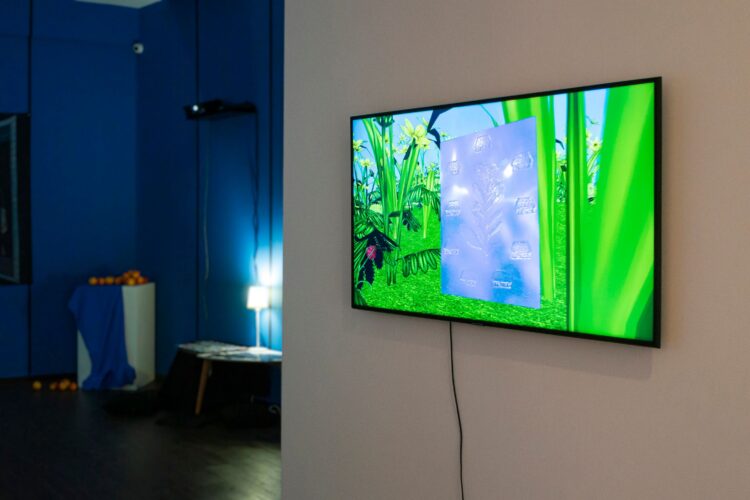

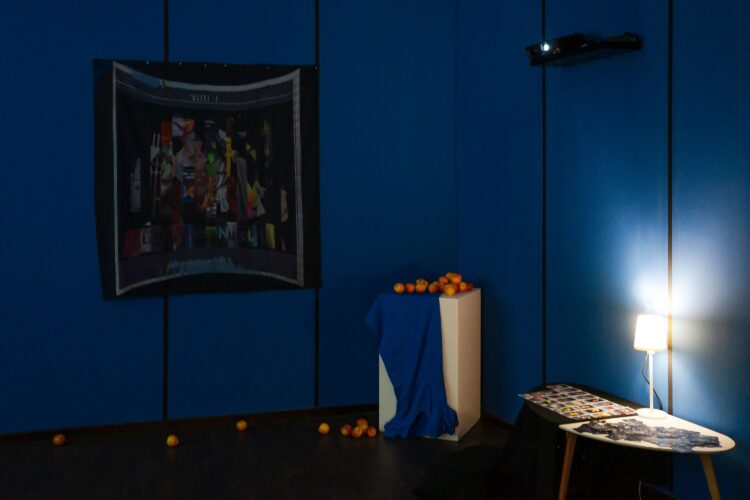
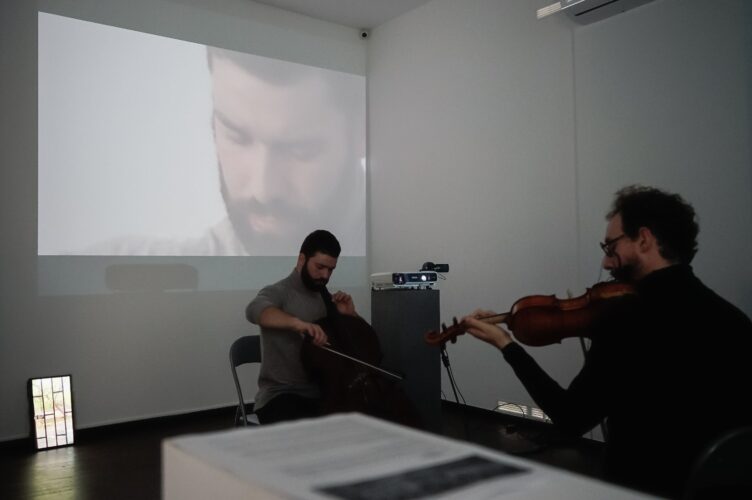
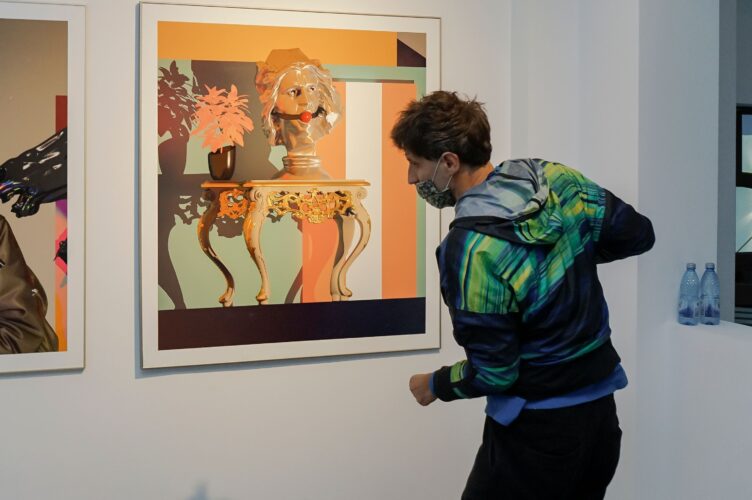
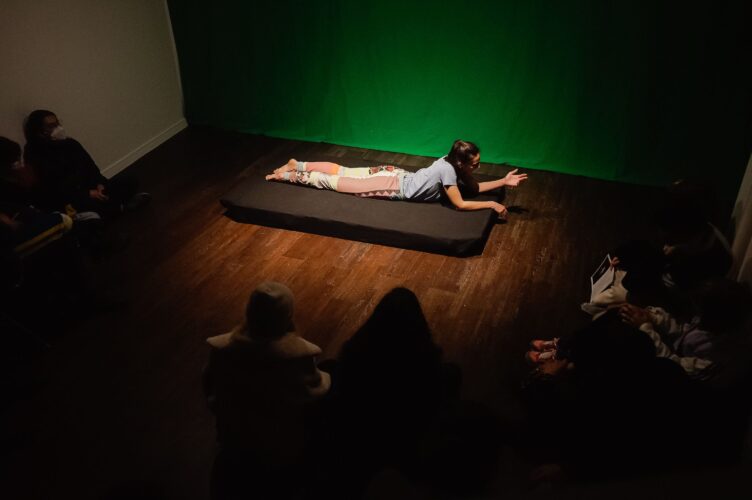
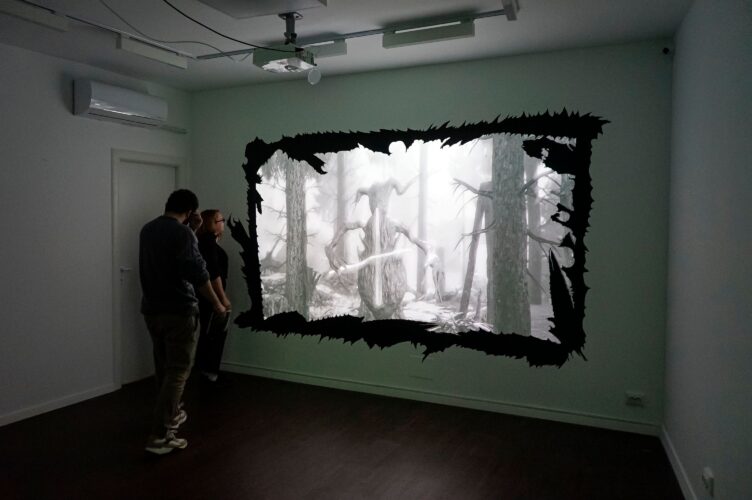
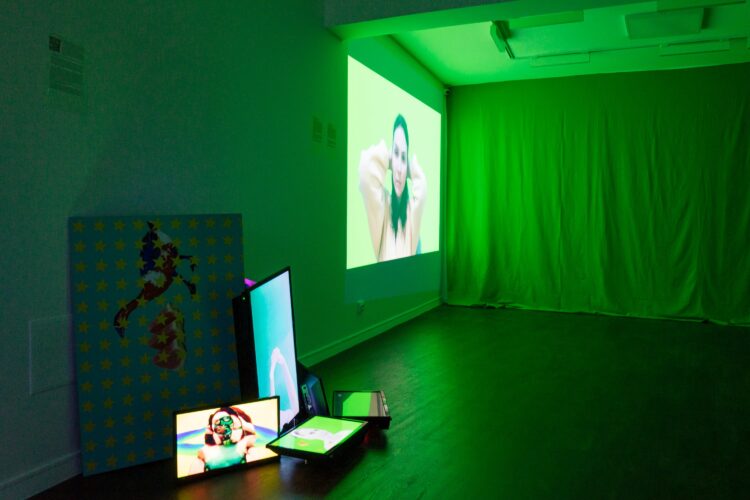

Comments are closed here.